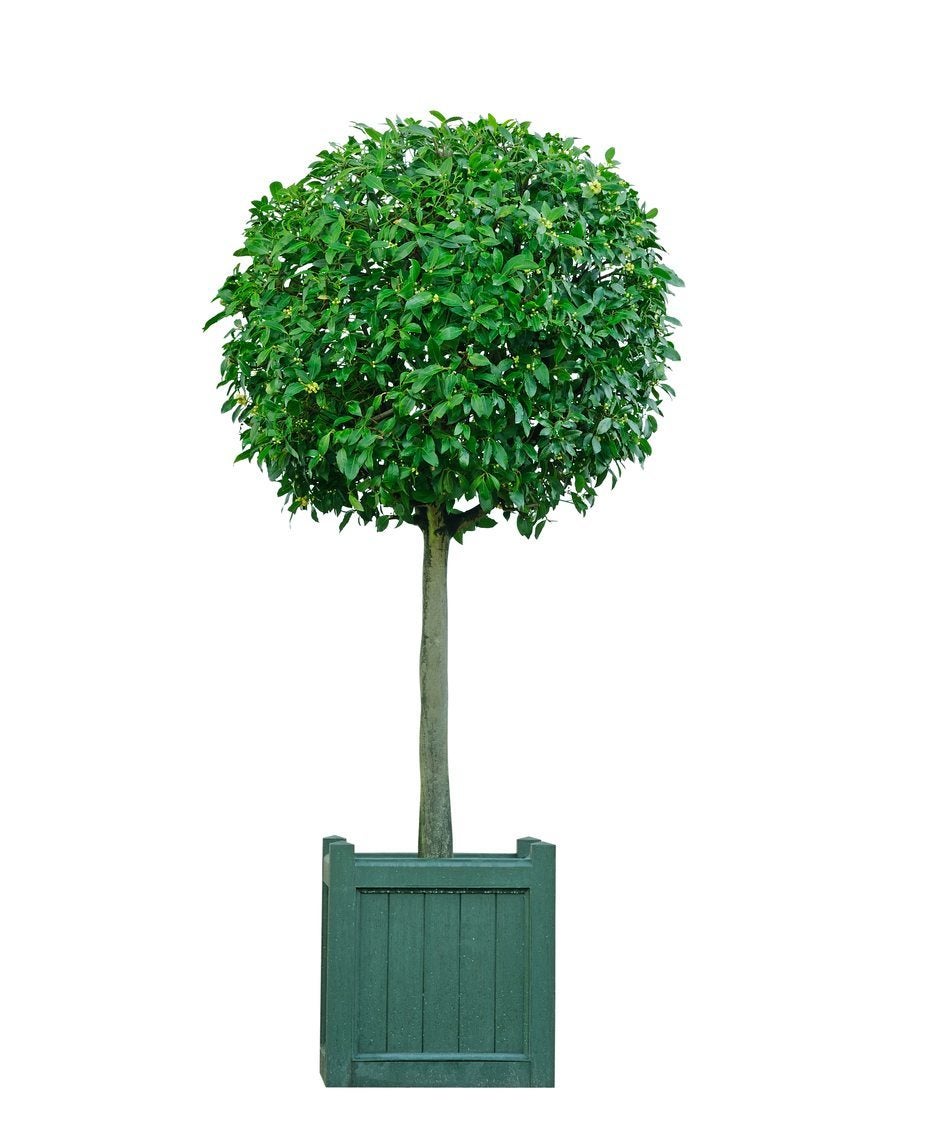How To Prune A Bay Topiary – Tips For Bay Tree Topiary Pruning


Bays are wonderful trees because of their resiliency and their usefulness in cooking. They’re also very popular due to how well they take to unusual pruning. With the right amount of trimming and training, it’s possible to shape your own bay tree topiaries. Keep reading to learn more about bay tree topiary pruning and bay tree topiary ideas.
How to Make a Bay Topiary
The key to bay tree topiary pruning, or any topiary pruning in general, is multiple cuttings in a single growing season. A single heavy pruning should be done in the spring to achieve the desired shape. The tree will continue to grow throughout the growing season, and it can be trimmed back regularly to keep its shape. There are a few very popular bay tree topiaries. The most common bay topiary shape is the “standard” or lollipop shape – a bare trunk with all the foliage collected in a ball at the top. This can be achieved by encouraging a single leader trunk and allowing it to grow to your desired height. Once you’ve done this, cut away all the lower branches of the tree, leaving only the top one third or so remaining. Over the next several years, clip the tops of the branches and encourage spreading ones. Eventually this will even out into an attractive ball shape. If you have a young bay tree with several shoots, you can achieve a very cool braided trunk look. Simply dig up your tree and separate the shoots, making sure each has a portion of the root ball attached. Replant your shoots as close together as possible, removing the lower two thirds of branches. In the early spring, when the shoots are at their most pliable, carefully braid them together and tie them in place. After a few years, they will take to the shape naturally. Trim the foliage as you like – it looks best with the standard lollipop ball on top.
Sign up for the Gardening Know How newsletter today and receive a free copy of our e-book "How to Grow Delicious Tomatoes".

The only child of a horticulturist and an English teacher, Liz Baessler was destined to become a gardening editor. She has been with Gardening Know how since 2015, and a Senior Editor since 2020. She holds a BA in English from Brandeis University and an MA in English from the University of Geneva, Switzerland. After years of gardening in containers and community garden plots, she finally has a backyard of her own, which she is systematically filling with vegetables and flowers.